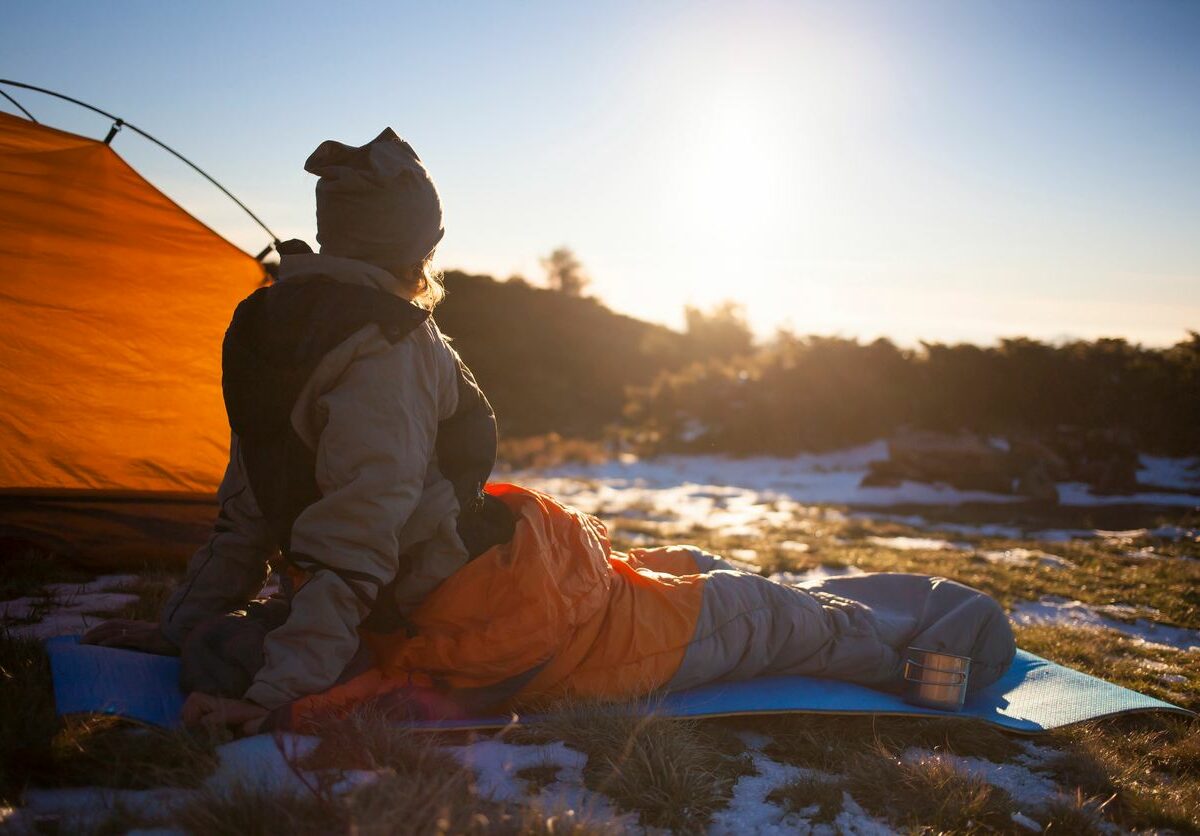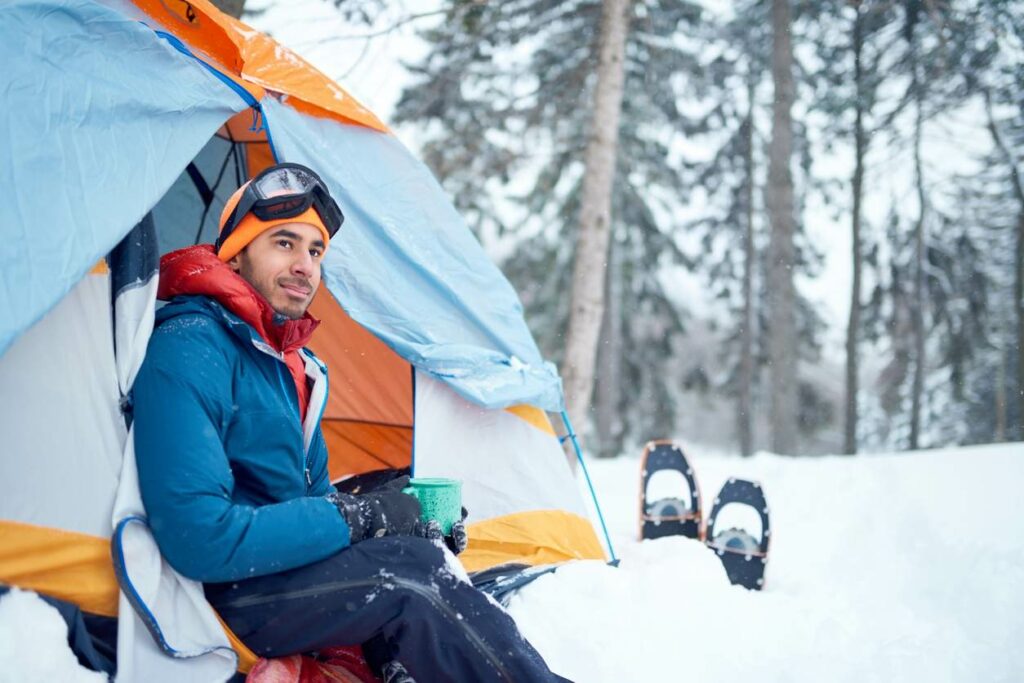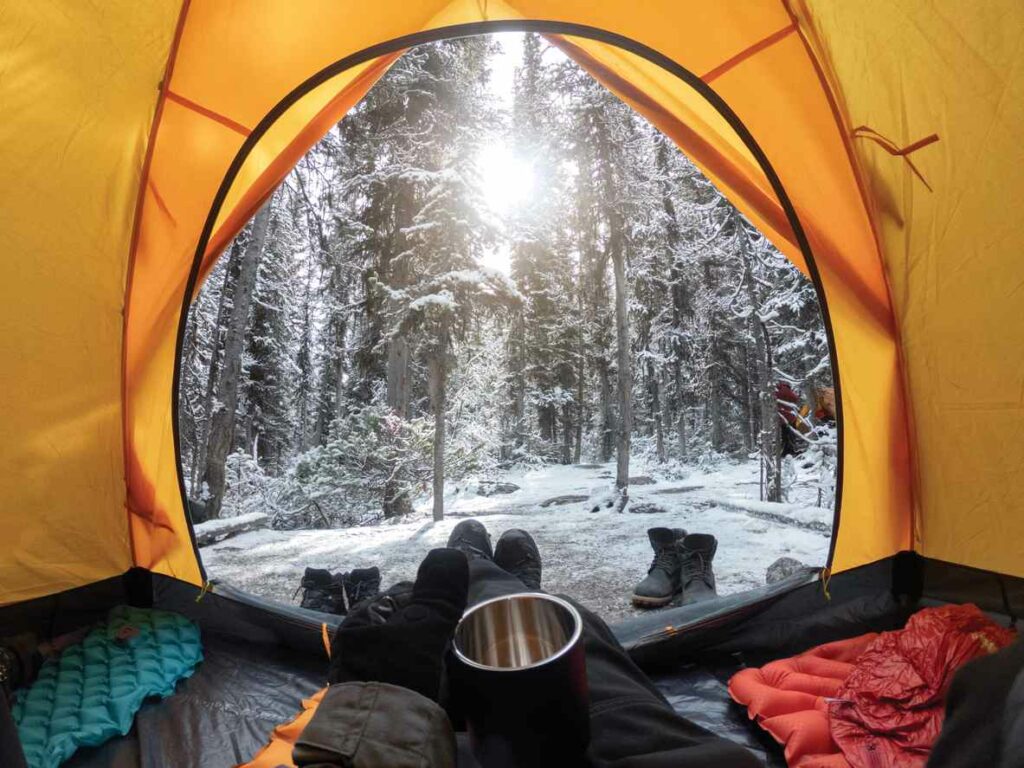How To Stay Warm Camping in the Winter and Fall

Whether you’re planning a camping trip for fall, winter, or just in areas that are cold all year, you need to be properly prepared for how to survive and thrive out in the cold. Camping is supposed to be a fun and relaxing time. Fall, in particular, is a great time for camping, and there are plenty of snowy and wintry places that provide opportunities for tourists and outdoorsmen to explore. Camping in the fall and winter offers unique experiences for the intrepid individual that you won’t want to miss just because you’re unprepared for the cold.
Whether this is your first time camping in cold weather, or you’ve been on your fair share of trips in a winter wonderland, this guide will help you be prepared for the weather so you can stay warm and relax while enjoying cold weather activities, snowy mountains, or autumn forests.
Dressing Warm

The first step to staying warm is dressing appropriately for the cold. The ultimate rule for cold weather camping is to dress in layers (which we will detail in its own section). Having a good balance of layers allows for flexibility in your apparel.
One of the best ways to keep warm is to avoid sweating. Sweat is the human body’s primary cooling mechanism, which makes it one of the most dangerous things when you want to stay warm. When you get done with a hard day of hiking or any strenuous activity, you’re bound to have worked up a sweat. Changing out of sweaty clothes can help you avoid losing extra heat, so be sure to pack an extra change of clothes.
A warm hat or balaclava is a great addition. Humans lose a lot of heat through their heads, so keeping your noggin nice and toasty can help you retain some lost heat.
Layers, Layers, Layers
The first thing that almost any camper will tell you is to dress in layers for cold weather. Dressing in layers gives you the flexibility to respond to many different levels of low temperatures. The three basic layers you’ll need are a base layer, mid layer, and outer layer, each of which has a different role to fulfill.
The primary function of the base layer is to keep you dry. Moisture-wicking fabrics that help move moisture away from your skin while evaporating are ideal. If your sweat is sapping away your heat at the lowest level, staying warm will be an uphill battle.
The middle layer is the main insulator layer. Hoodies, sweatshirts, sweaters, flannels, and fleece are all common choices for this layer. Any of a number of fabrics, such as wool and polyester, will work wonders as insulators to trap heat you would otherwise lose to the environment. Choose a brand and style of insulator that works for you and keeps you warm.
The outer layer serves to keep wind and water off you and your clothes. If you’re only dealing with light rain and cool temperatures, a water-resistant jacket is a better option because it’s more breathable and can prevent overheating. However, for serious cold and rain or snow, a waterproof jacket or coat will work better to keep out the wet and wind. If needed, you can add an additional “shell layer” to protect against especially wet conditions. This will most likely be another waterproof jacket.
Sleeping Warm

Now that you have your apparel sorted, you should begin planning how to keep warm while you sleep. The primary points of warmth for sleeping are your tent and your sleeping bag. As tempting as it is to get a larger tent so you can spread out, smaller tents provide better insulation with less space for cold air to seep in. Opt for a sleeping bag that’s rated for the lowest temperatures you’ll be sleeping in. Your individual comfort level will also play into your sleeping bag decision. If you tend to be colder than average, getting a sleeping bag rated for a temperature even lower than you expect will help you stay warm and comfy.
Preparations
A big portion of staying warm while you sleep is preparation. Prepare the ground with two sleeping pads instead of the usual one for extra separation from the ground. The earth can drain a lot more heat than you’d anticipate, so adding some protection is a massive help.
On top of that, adding a quilt or other layers outside of your sleeping bag is another great way to insulate yourself from the cold. Sleeping bag liners work in similar fashion and are also a great option. You can also add hand and foot warmers to the bag if you want an additional source of heat.
Make sure your tent is at least partially ventilated as well. In subfreezing temperatures, water vapor from your breath will condense and freeze on the tent if there isn’t proper ventilation. You should also flip any water bottles and stove fuel upside down so you can use them more easily in the morning. Liquids freeze from top to bottom, so the side facing upward will solidify first.
Settling In

With your sleeping area prepped, you can now set about settling in for the night. Try and wear the smallest number of layers you can comfortably manage when you get into your sleeping bag. When you get up in the morning, you’ll want to be able to have more layers to throw on outside of the sleeping bag that can provide warmth.
A hot water bottle is a great source of extra heat for sleeping. While the common method is to place the bottle close to your feet, it’s better to place it closer to your core and midsection. This will help your body more easily circulate the heat to all of your extremities than just your feet.
As mentioned before, we lose a lot of heat through our heads, but tucking your head into your sleeping bag can have a negative effect. Water vapor from your breath will condense inside and leave you damp, which will sap your heat much faster. A better method for warming your head is to wear a balaclava while you sleep. It will help trap heat while letting the water vapor get away from your body.
Fall and Winter Campsites at Rjourney Resorts
With all of your new knowledge about proper cold-weather camping techniques and supplies, you can’t help but get excited about the places you can go and winter recipes to try on the road. When you start planning your next camping trip, Rjourney’s RV resorts and campgrounds are a great way to stay.
We offer locations across the country, including spots perfect for winter fun including Utah, Oregon, and Washington. Many of our facilities offer traditional campgrounds where you can put your knowledge to the test while enjoying the beauty of nature or the local culture. If you’d prefer a less rugged lodging option, we also offer RV parking as well as rentable cabins. Get in touch with nature and enjoy the outdoors at Rjourney’s resorts.
Are you a fan of fall and winter camping? Looking to try it out for the first time? Share this blog with your friends and family, find a new location to explore, and plan your adventure together!